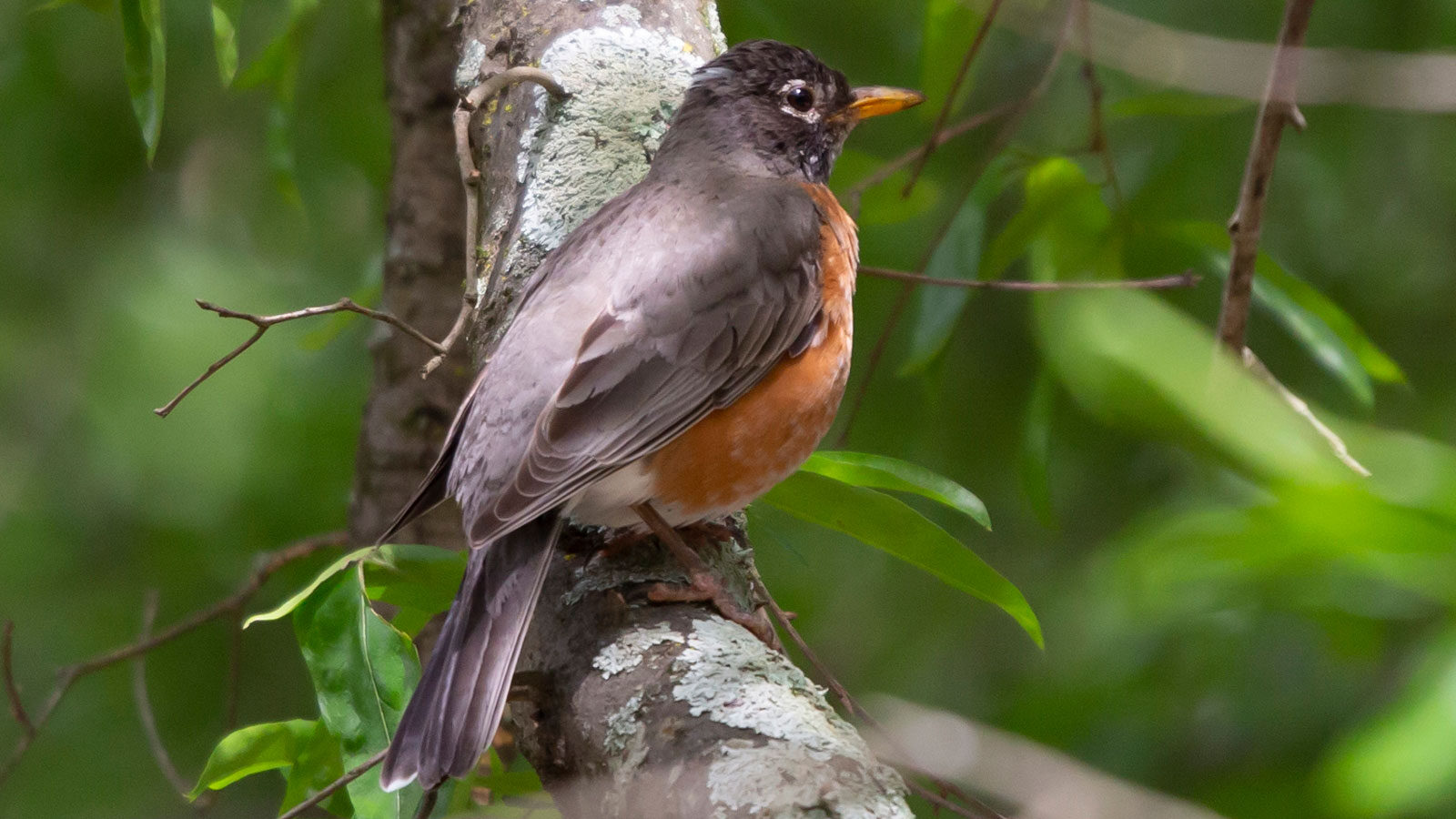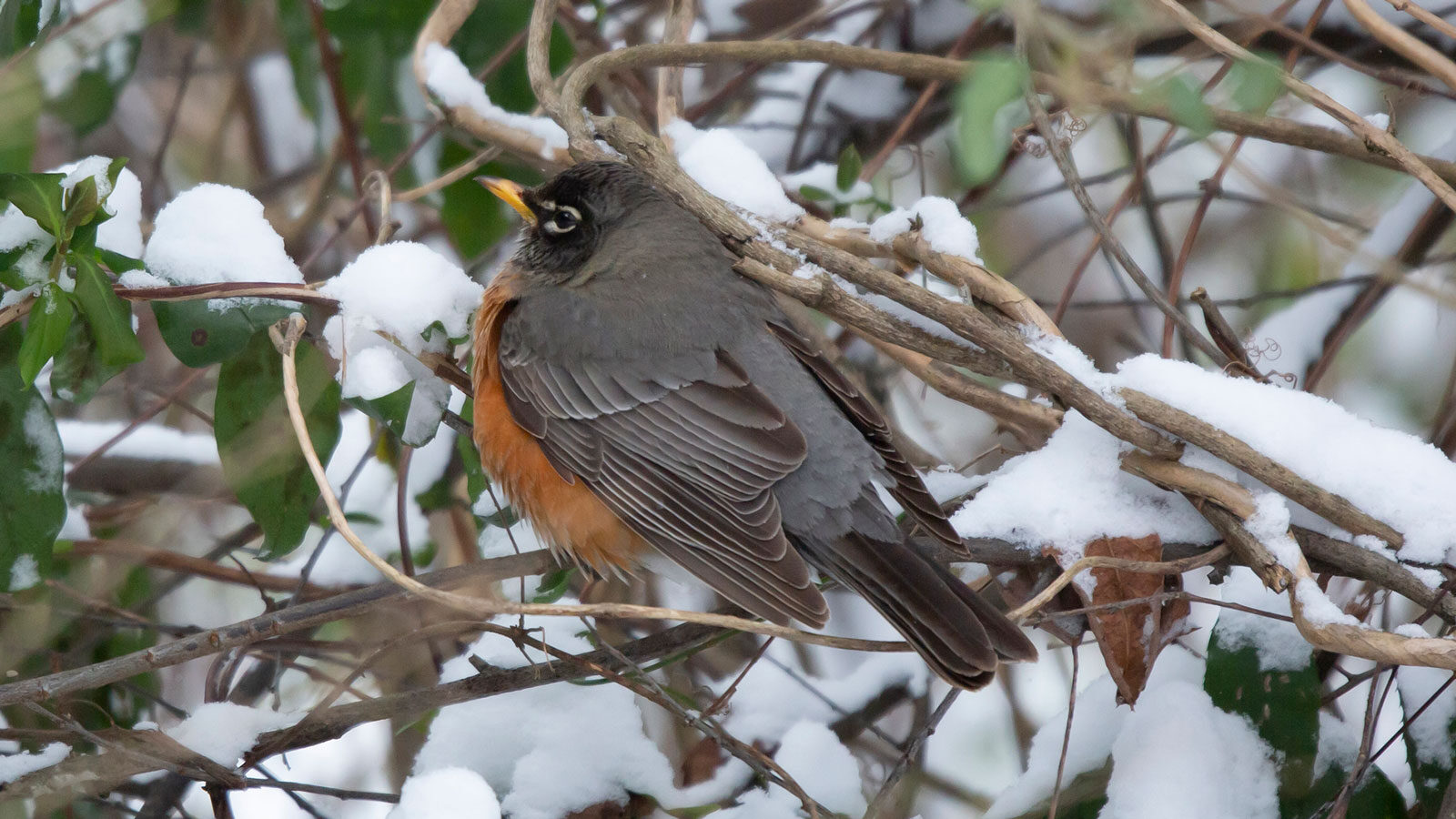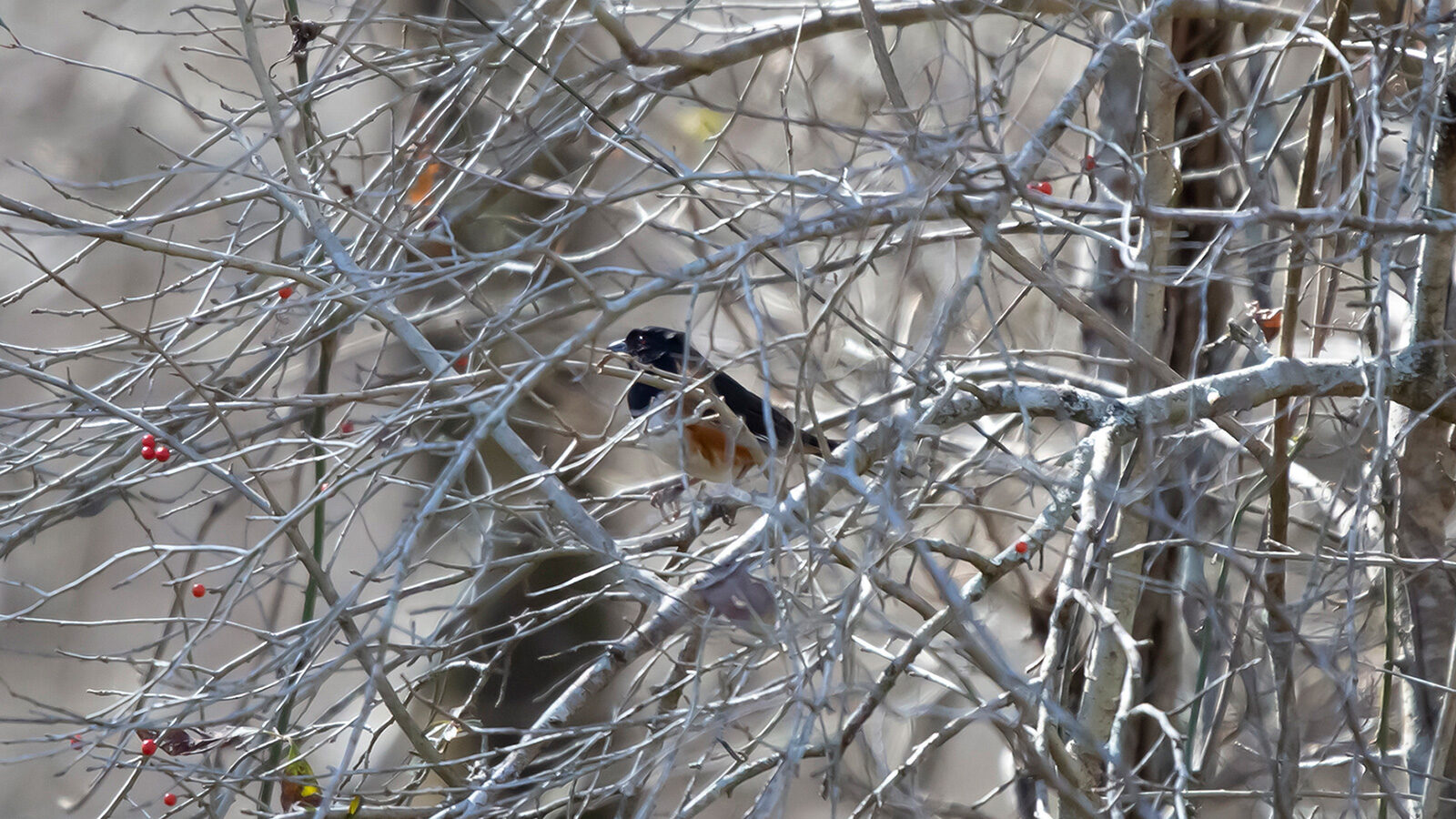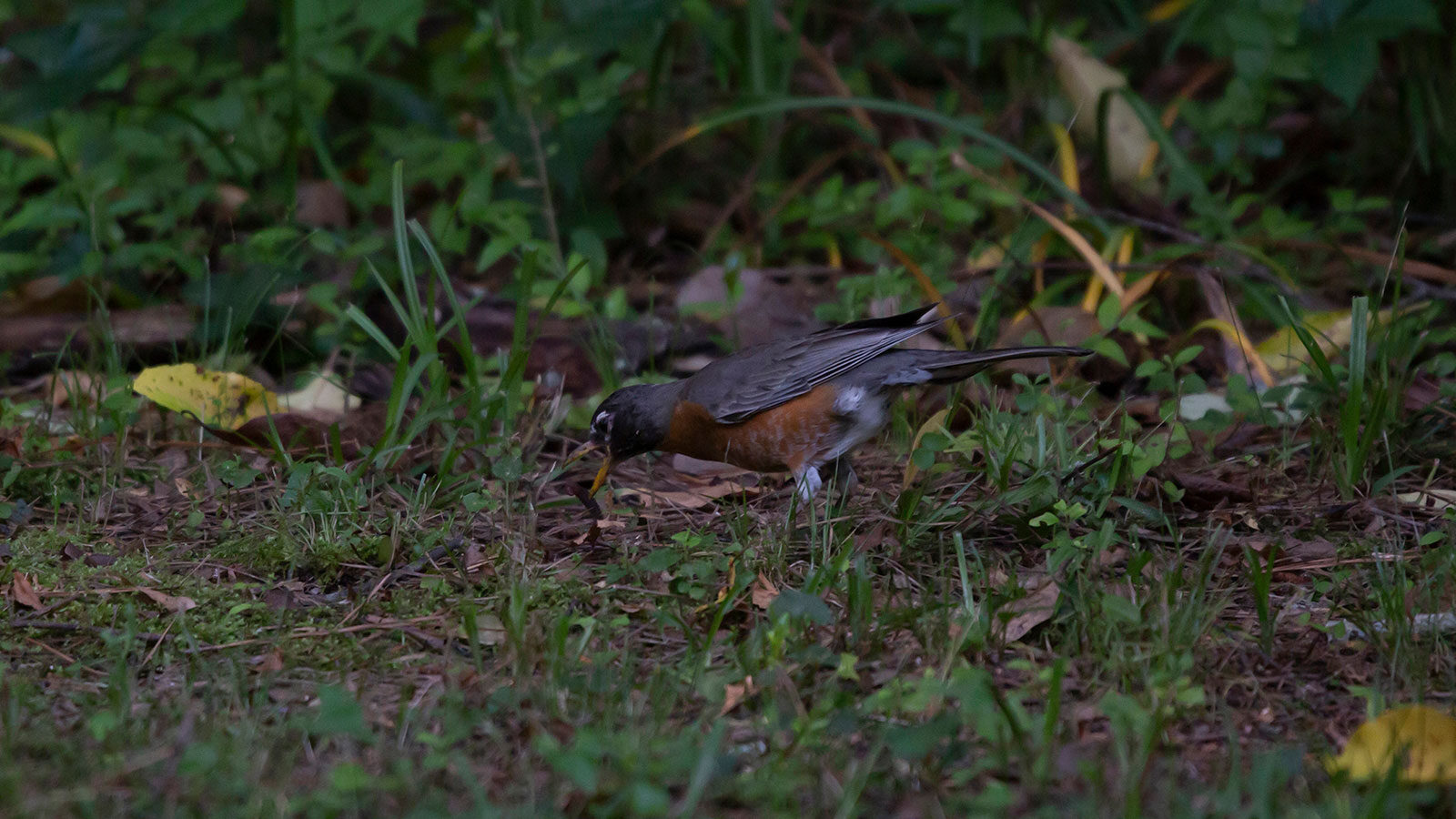
Did you know that American robins can be easily poisoned by pesticides?
American Robins
at
a Glance

Key Features:
American robins are dark gray birds with orange breasts and bellies.
Least Concern - Population Increasing
Habitat:
Fields, forests, gardens, parks, and yards
nesting habits:
American robins build cup-shaped nests on horizontal branches out of dead grass, twigs, moss, paper, feathers and roots on the lower halves of trees.
seasons american robins are active in our area:
All year
Diet:
Insects and fruit
hunting Behavior:
American robins forage on the ground.
Commonly Confused With:
Eastern Towhees

American robins are often confused with eastern towhees because both have orange on their bellies.

American robins have orange bellies. Eastern towhees have orange on the sides of their bellies.